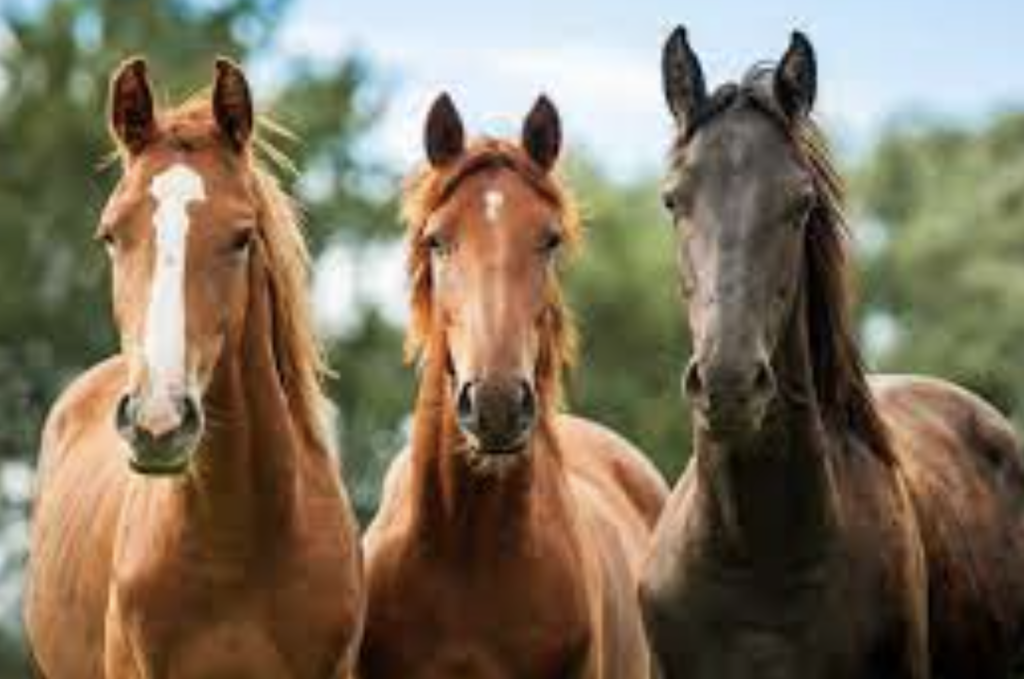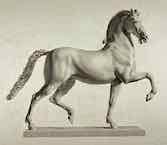I’ve asked Felicity George, founder of one of my training institutes, the Equine Behaviour Affiliation, if she can talk a bit about her work in a stabled horse setting, riding schools and else, where many of the 5 Freedoms are not provided. Felicity is also the author of the book « Applied Equine Psychology: The Art and Science of Helping Horses » (2024), here is her answer.
First, Felicity insists on the fact that no amount of band aid fixing will make a full time stabled situation ok for the equine. Her answers serve to improve the lives of equines in contexts where it would be worse to do nothing.
« It’s a fine line to seeming to condone their circumstances by giving this case information. But 24/7 stabling isn’t Ok.

Once we’ve been clear about this, what can we do, what can I usefully provide to help such horses? It’s a reasonable objective if you can’t wave a magic wand and give them good lives. For my cases, most successful interventions have involved giving horses more turnout, and more (social / tactile contact) time with other horses etc. When such basic things are lacking, making small changes may or may not help and will depend very much on the individual horse. I don’t have big enough numbers to show patterns of ‘what works’ for these situations.
Things that have helped for stabled horses
- Moving stables to suit the individual – e.g. quieter or more stimulating location, next to friends, protected from particular people who maybe only go to one part of the barn.
- Alterations to stables to be able to protect horses from their neighbours, or allow physical contact, as appropriate.
- Enrichment within stables as appropriate.
- Improve physical comfort – nutrition, body work, ad-lib forage, checking/changing tack, changes to ridden work, ensuring they have safe spaces to roll, sleep etc.
- Staff training days for riding school (done this in 3 places). In all cases this was motivated by one horse in the environment becoming easier to ride and handle, leading to interest in expanding the practices to other horses. Information was provided about stress, trust accounts etc, then we were examining what worked for the one horse in question, and how to extend this. We were getting staff to generate ideas as a group. We have come up with things like :
- Ground rules – no hitting, shouting, pressuring horses.
- Safe spaces and person for staff to discuss concerns.
- Named handlers for each horse – matching personalities, experience etc – and people can learn how to handle each horse and be added to the list.
- Changing ride order in lessons to put horses who get on close to each other and enhance feelings of safety.
- Changing lessons – experiment gently – e.g. get agreement that relaxation is fundamental to a horse working well, teach riders how to recognise and help relieve tension in the horse and in themselves.
- Meeting horse’s social needs better – e.g. group turn out in arena when not in use, walks in hand with other horses – in one place got riders to ‘cool off’ horses with in hand walk/graze with other horses. This is obviously to be implement with care. One can also sell this as a useful handling skill for riders who want to go on and have their own horse.
- Humans meeting horse’s relationship needs better. Lots of options here.
- Group housing – in one place a disused shed was converted for ponies. In another, 2 stables were knocked together and a Shetland shared with a Clydesdale cross! Both were much happier.
- Observing when horses feel unsafe in their stables, and making changes to reduce this. In one case, simply moving location of hay net, so horse wasn’t threatened by neighbour when eating. Once fear is recognised, people can be creative and motivated to make easy changes.
More general thoughts
What about the social license as a motivator? It is good to be seen to be doing things to improve equine well-being.
Experiment with attracting different clients who want a different experience with horses – e.g. relationship building.
At one riding school I did a one-off clinic. ½ hour with riders on the ground listening to horses, then riding and it felt totally different. Riders then requested repeats and it became a regular thing.
Think through mental well-being factors, and for an individual location, what might help for each factor? 5 domains of animal welfare
Specific Riding school problem cases and solutions
1. Warmblood ex-competition horse, 18 years old gelding at riding school
He was aggressive when tacking up.
Solution: backing off at the least sign of discomfort, not entering stable until he engaged etc. – attunement resolved problem.
2. Section A mare, 12 years old, child’s pony in riding school.
She was bucking, cantering back to the other horses in lessons.
She was provided with more access to other horses which resolved problem.
Question: « What form of more access, did they have a meadow where she could spend more time with others? Or in an empty arena at night shared by several horses? I wonder how to solve social contact issues in riding schools with no meadow access. «
Felicity: « In this case, it was converting space into a bigger stable for several ponies instead of separate stables. The riding school was keen as they had an area they could easily use and it saved them labour costs: it is easier to do 4 ponies in one space. In other cases, we’ve turned horses out in an indoor arena overnight, or for quiet times whenever possible. In a couple of cases, even changing to a low partition between friendly horses (being careful about resource competition) has helped.
3. Extremely sensitive 13.1 hh pony
He couldn’t be ridden by any but a couple of riders, any leg or rein pressure and he would ‘take off’ and not stop running.
He was in chronic stress – so they were monitoring reactivity unmounted. He was given time off and basic needs were met until reactivity normalised. Then there was a gentle reintroduction to ridden work. Instructors adapted their advice to riders if he started to show signs of arousal – to help him to calm. Strict rules about no pressure from hands, gentle aids etc.
4. 17 hh Irish sports horse, 6 years old gelding
He was slow when ridden, and very aggressive in the stable.
He was moved to a bigger, quieter stable with basic enrichment: the aggression diminished substantially, and ridden work improved.
Question: « What does « bigger » mean?: meaning more spacious as his stable was too small for very large horse? what was the basic enrichment, toys? »
Felicity: « yes – his stable was too small for him, although big enough that he could lie down. It was also strange – in the middle of a barn, with no solid walls, just metal bars from ceiling to floor all round. There were horse and people constantly walking past. He got moved to a big corner stable at the back of the barn. Regarding the enrichment – it was very basic – several haynets instead of one, and a treat ball.
5. 15 hh cob gelding, 14 years old.
He pulled away from people leading him to the arena, he would kick out if they tried to catch him.
Solution: Working on attunement from the point of entering his stable. He was also lead to arena with another horse, and pressure was reduced. Riders take cut grass to feed him on the way to reduce motivation to plunge into the verges!
6. 13 hh mare, 8 years old
She was explosive when first mounted and described as ‘cold backed’
Her location was changed and also the context of tacking up. Before, this had been done near a busy tack room, tied up.Changed to be done now in stable with friendly horse next door, and attunement, taking more time – and problem entirely disappeared. Trigger stacking (good article about trigger stacking here and here).
Question: « what does that mean, a) cold backed b) tied up, was she tethered to the wall? »
Felicity: « Cold backed is an old fashioned term basically meaning the horse seems to have a ‘sensitive’ back. Which goes away once they are warmed up. As to ‘tied up’ – yes, she was tethered to the wall.
7. 10 years old thoroughbred mare
She was refusing jumps. This happened always towards the end of the lesson.
The solution in her case was to recognise that this is asking too much. The rider now reduces pressure, let her take short breaks on a long rein, throughout lesson (when she asked by trying to put her head down, which had previously been responded to with more rein contact). Much better all round, no more refusals. However, the possible underlying physical issues were not addressed…
Ressources
Beyond Behaviourism Webinar Series (Equine Behavior Affiliation)
The 2020 Five Domains Model: Including Human–Animal Interactions in Assessments of Animal Welfare
The hard life of a lesson pony | The equine ethologist – lot’s of good ideas
